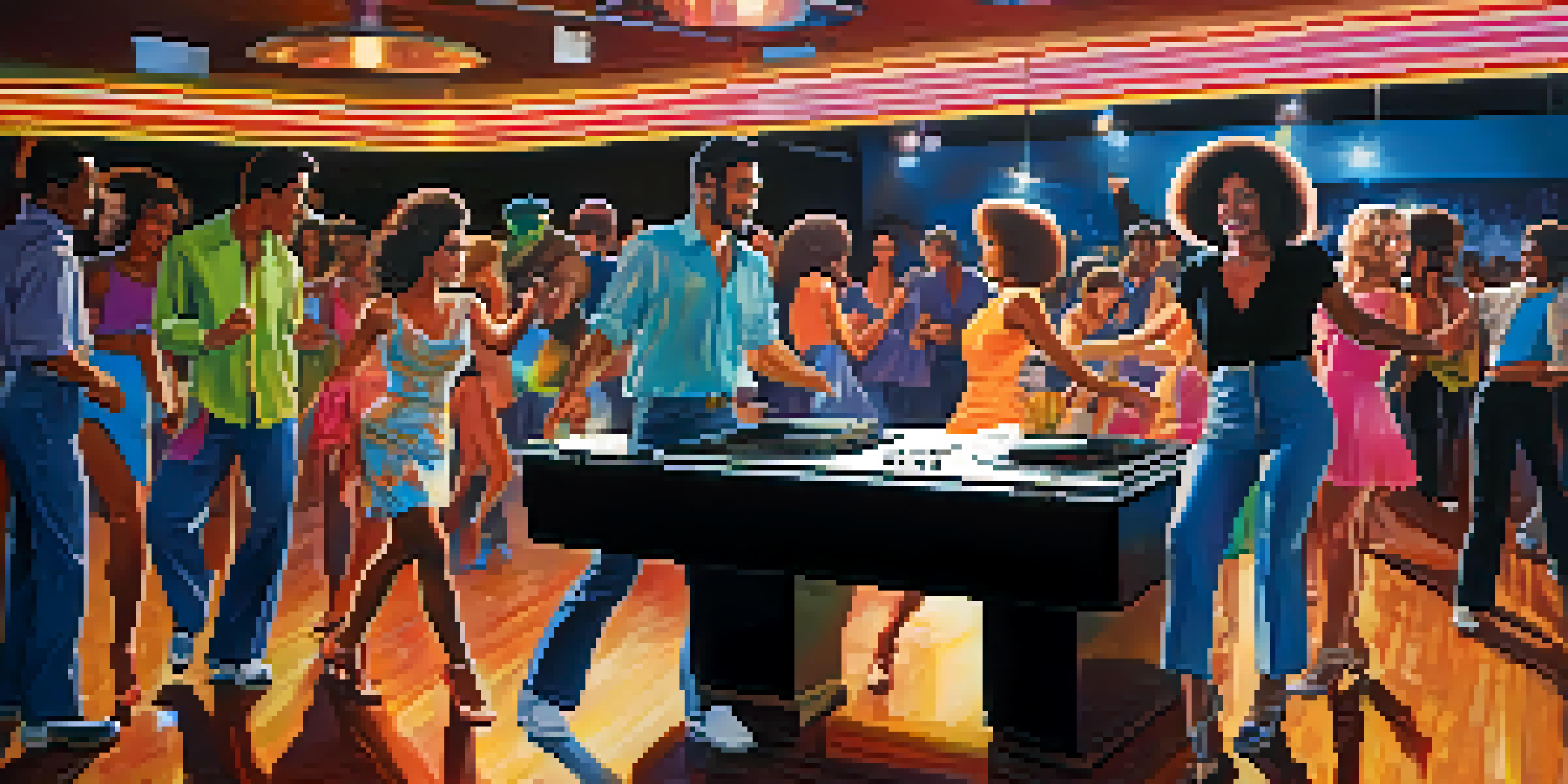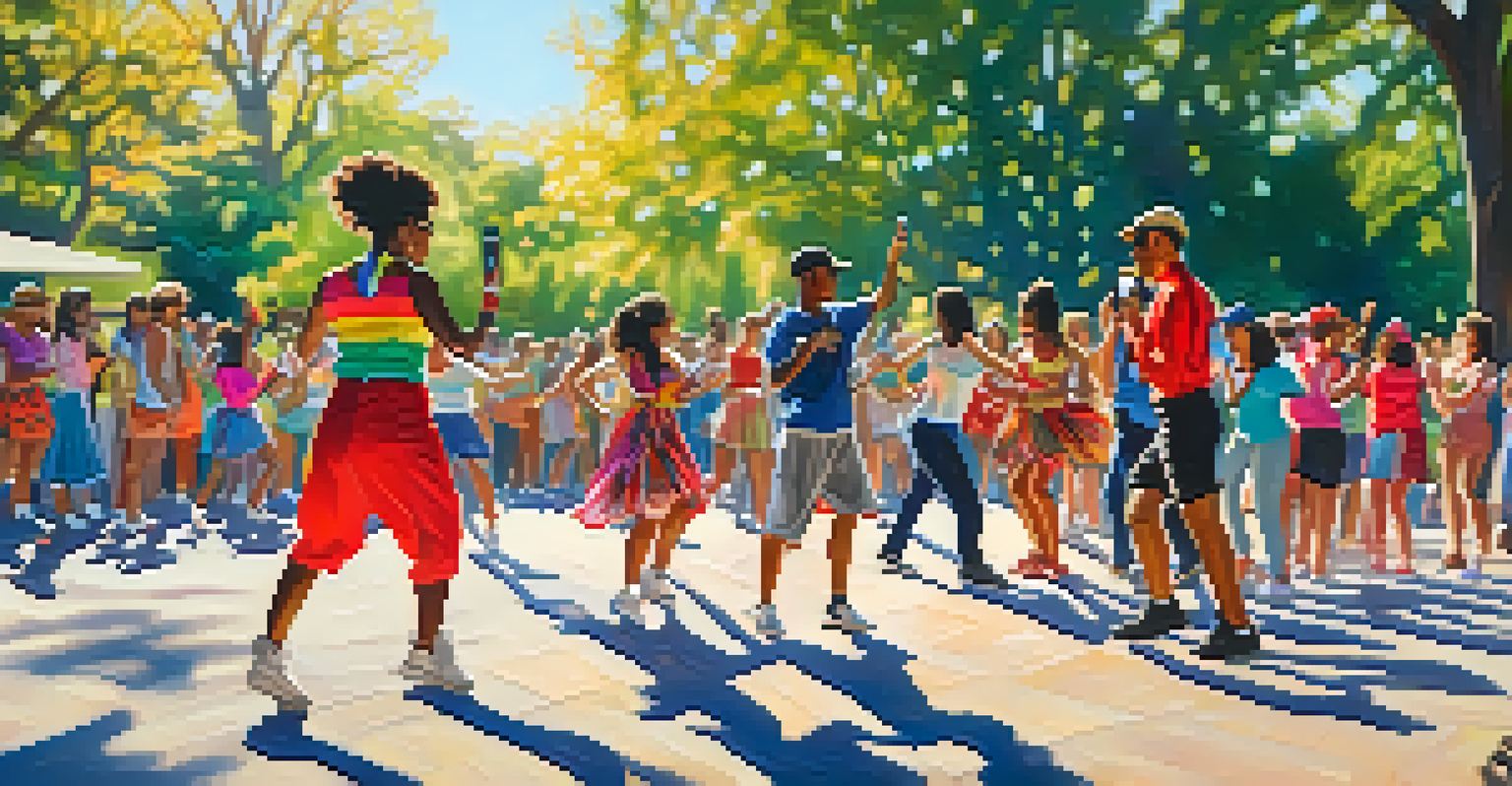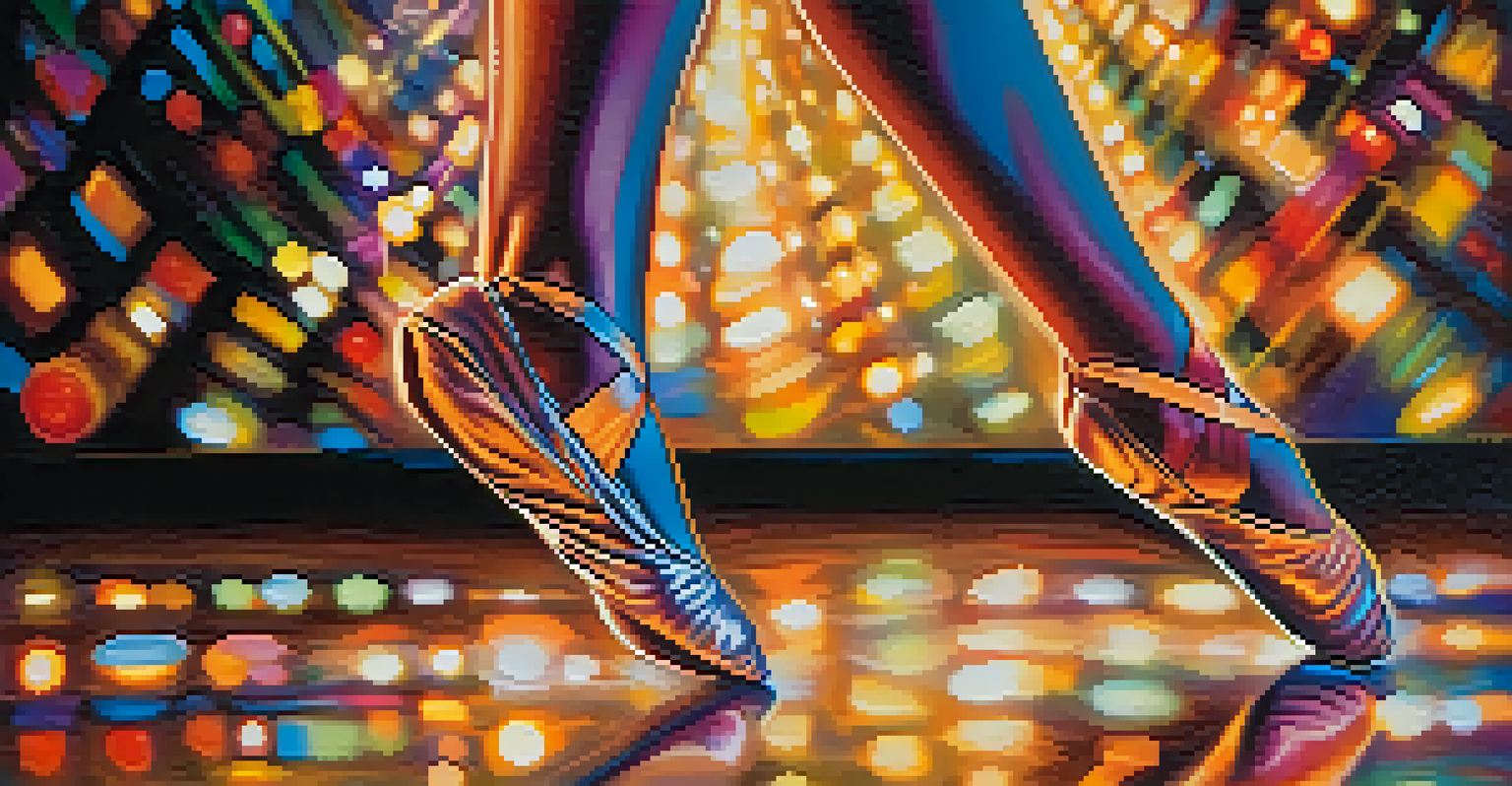House Dance: A Look at Its Origins and Evolution

The Birth of House Dance in Chicago's Nightclubs
House Dance originated in the vibrant nightclubs of Chicago during the late 1970s. It blossomed from the city's rich musical landscape, heavily influenced by disco, soul, and electronic music. DJ Frankie Knuckles, often referred to as the 'Godfather of House,' played a pivotal role in cultivating this new dance style.
Dance is the hidden language of the soul.
As DJs began to experiment with loops and beats, dancers found their own unique expressions on the dance floor. The combination of rhythmic footwork, fluid body movements, and improvisation made House Dance not just a form of dance, but an art of storytelling through movement. It was a way for people to connect with the music and each other in a euphoric atmosphere.
House Dance quickly became a staple in other cities, spreading like wildfire as more people were drawn to its infectious energy and freedom of expression. The genre not only defined a dance style but also created a sense of community among dancers and music lovers alike.
Influences of Music Genres on House Dance
House Dance is deeply intertwined with various music genres, each leaving its mark on the dance style. The influence of disco is evident in its upbeat tempo and infectious grooves, while elements of funk add a layer of rhythm that invites improvisation. As electronic music evolved, so did the sound of House, incorporating new beats and styles.

In the 1980s, the introduction of hip-hop further enriched House Dance, merging street dance styles with club culture. This fusion allowed dancers to experiment with different movements, creating a diverse range of styles that reflect their personal experiences and backgrounds. It also encouraged a competitive spirit, leading to dance battles that showcased talent and creativity.
House Dance: A Cultural Movement
House Dance transcends being just a dance style, representing a cultural movement that champions inclusivity and self-expression.
Today, House Dance continues to evolve, incorporating influences from other genres like jazz, modern dance, and even breakdancing. This blending of styles ensures that House Dance remains relevant and dynamic, appealing to new generations of dancers eager to make their mark.
The Role of Dance Competitions in House Dance
Dance competitions have played a significant role in the evolution of House Dance, providing a platform for dancers to showcase their skills. Events like the 'House Dance International' and 'Juste Debout' have gained popularity, attracting top talent from around the world. These competitions not only celebrate the dance but also foster innovation and creativity.
The body says what words cannot.
During these events, dancers are encouraged to push their limits, experimenting with new moves and styles. The competitive nature of these gatherings fuels a sense of community, as dancers share their passion and learn from one another. This spirit of camaraderie is essential for the growth of House Dance, as it thrives on collaboration and inspiration.
Moreover, competitions have helped elevate House Dance into the mainstream, allowing it to reach wider audiences. As more people become aware of the art form, it opens doors for aspiring dancers, giving them the opportunity to pursue their dreams and connect with others who share their love for House Dance.
House Dance as a Form of Self-Expression
At its core, House Dance is a powerful form of self-expression that allows individuals to communicate their emotions through movement. Each dancer brings their unique personality to the floor, interpreting the music in their own way. This personal connection to the dance is what makes House so special and relatable.
Dancers often use House Dance as a means to escape everyday pressures, finding solace in the rhythm and flow. Whether it's a celebration of joy or a release of pent-up feelings, the dance becomes a therapeutic outlet. This emotional connection encourages dancers to be authentic, embracing their individuality and creativity.
Global Evolution of House Dance
As House Dance spread worldwide, it absorbed diverse influences, creating a rich tapestry of movements that reflect various cultures.
Furthermore, the inclusive nature of House Dance invites everyone to participate, regardless of skill level. This sense of belonging fosters a supportive environment where dancers can grow and evolve, reinforcing the idea that House Dance is not just about technique but also about genuine expression and connection.
The Global Influence of House Dance
As House Dance traveled beyond its Chicago roots, it began to adopt influences from various cultures around the globe. Cities like New York, Paris, and London became hubs for House Dance, each contributing its own flavor to the style. This globalization has created a rich tapestry of movements that reflect the diverse backgrounds of dancers.
In places like Japan, House Dance has been embraced with a unique twist, blending traditional Japanese dance elements to create something entirely new. Similarly, in Brazil, dancers incorporate local rhythms and styles, showcasing the versatility of House Dance. This cross-pollination of styles has only enhanced the depth and appeal of the dance form.
Today, House Dance is celebrated internationally, with workshops, festivals, and dance communities emerging worldwide. This global phenomenon illustrates the dance's power to transcend borders, uniting people through a shared love for music and movement.
The Future of House Dance: Trends and Innovations
As we look to the future, House Dance continues to evolve with new trends and innovations shaping its landscape. The rise of social media has played a crucial role, with platforms like Instagram and TikTok allowing dancers to share their creativity with a global audience. This instant connectivity encourages collaboration and sparks new ideas, further enriching the dance community.
Moreover, the fusion of technology with dance is paving the way for exciting possibilities. Virtual reality and augmented reality experiences are emerging, allowing dancers to engage with the art form in entirely new ways. These innovations not only enhance performances but also create immersive environments for audiences to enjoy.
Competitions Foster Community Growth
Dance competitions play a crucial role in House Dance's evolution, encouraging innovation and building a supportive community among dancers.
As House Dance adapts to the changing times, it remains rooted in its core values of community, expression, and celebration. The future holds endless potential for this vibrant dance style, ensuring that it will continue to inspire and unite people for years to come.
House Dance as a Cultural Movement
House Dance is more than just a dance style; it represents a cultural movement that champions inclusivity and diversity. Originating from marginalized communities, House Dance has always been about empowering individuals to express themselves freely. This ethos is reflected in the dance's evolution, which embraces all backgrounds and skill levels.
Throughout its history, House Dance has served as a platform for social commentary, addressing issues like identity, community, and belonging. Dancers often use their movements to tell stories and bring attention to important social issues, making the dance not only an art form but also a form of activism. This connection to culture enriches the dance experience, making it more meaningful.

As we celebrate the cultural significance of House Dance, it's essential to recognize the voices and stories that have shaped it. By honoring its origins and remaining committed to its inclusive values, we ensure that House Dance continues to thrive as a powerful form of expression for generations to come.